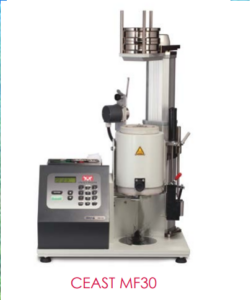[embedyt] https://www.youtube.com/watch?v=3S-SLnbCUh0[/embedyt]
Are you an organized traveler? Do you know how to pack your business pants to minimize creases? Or are you more likely to be throwing things in a bag at the last minute? And what in the world do these questions have to do with crosslinkable polymers?
At this point we’ve learned about polymers, and about crosslinking. But what is it about certain polymers that determines whether they crosslink or not? One factor is whether the polymer is amorphous or crystalline.
When a polymer is crystalline, its molecular chains are organized and oriented in a fixed direction. Amorphous polymers, though, are the exact opposite; their molecular chains are random and jumbled.
Crystalline polymers are hard and structured, like a diamond. Their molecular chains are locked against each other, which means they are more likely to break than they are to bend when placed under pressure. This tight configuration doesn’t really lend itself well to crosslinking. On the other hand, the molecular chains of amorphous structures have more room to move around each other, which makes them more likely to crosslink.
Let’s look at this another way.
If you’re going on vacation and you pack your suitcase in a “crystalline” manner (which is typically how I pack), the contents are going to be folded, organized, and there is going to be a lot of space for things to shift around.
If, however, you prefer to pack in a more “amorphous” manner (no judgment…), you might be running late to get out the door to the airport and stop just long enough to throw a few essentials in a bag.
When these two suitcases arrive at their destination, the crystalline packing method will mean that most likely everything is still in its proper place. The amorphous packing method, however, means contents are likely to shift.
So, while I might personally favor the crystalline packing method, when it comes to crosslinking, amorphous is preferred!
Want to learn more? Send us an email at ebeam@ebeamservices.com.



